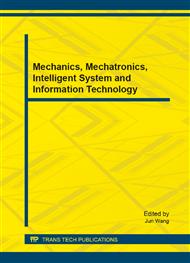p.760
p.764
p.769
p.775
p.783
p.789
p.797
p.808
p.814
Joint Energy-Efficient Resource Allocation Scheme for AF-Based Multi-Relay OFDM Networks
Abstract:
In this paper, a joint resource allocation scheme for energy-efficient communication in cooperative orthogonal frequency division multiple (OFDM) networks based on subcarrier pairing (SP) is studied. The problem aimed at maximizing the system energy efficiency (EE) is formulated into a mixed-integer nonlinear programming (MINLP) problem. To solve the complex MINLP problem, we simplify the optimizing model as a typical fractional programming problem by defining the equivalent channel gain, thus Dinkelbach’s method consisting of outer iterations and inner iterations can be used to find the optimal solution to the MINLP problem proposed in polynomial time. Simulation results show that the proposed scheme can improve the system EE and ensure the quality of service (QoS) of users.
Info:
Periodical:
Pages:
783-788
Citation:
Online since:
August 2014
Authors:
Keywords:
Price:
Сopyright:
© 2014 Trans Tech Publications Ltd. All Rights Reserved
Share:
Citation:


